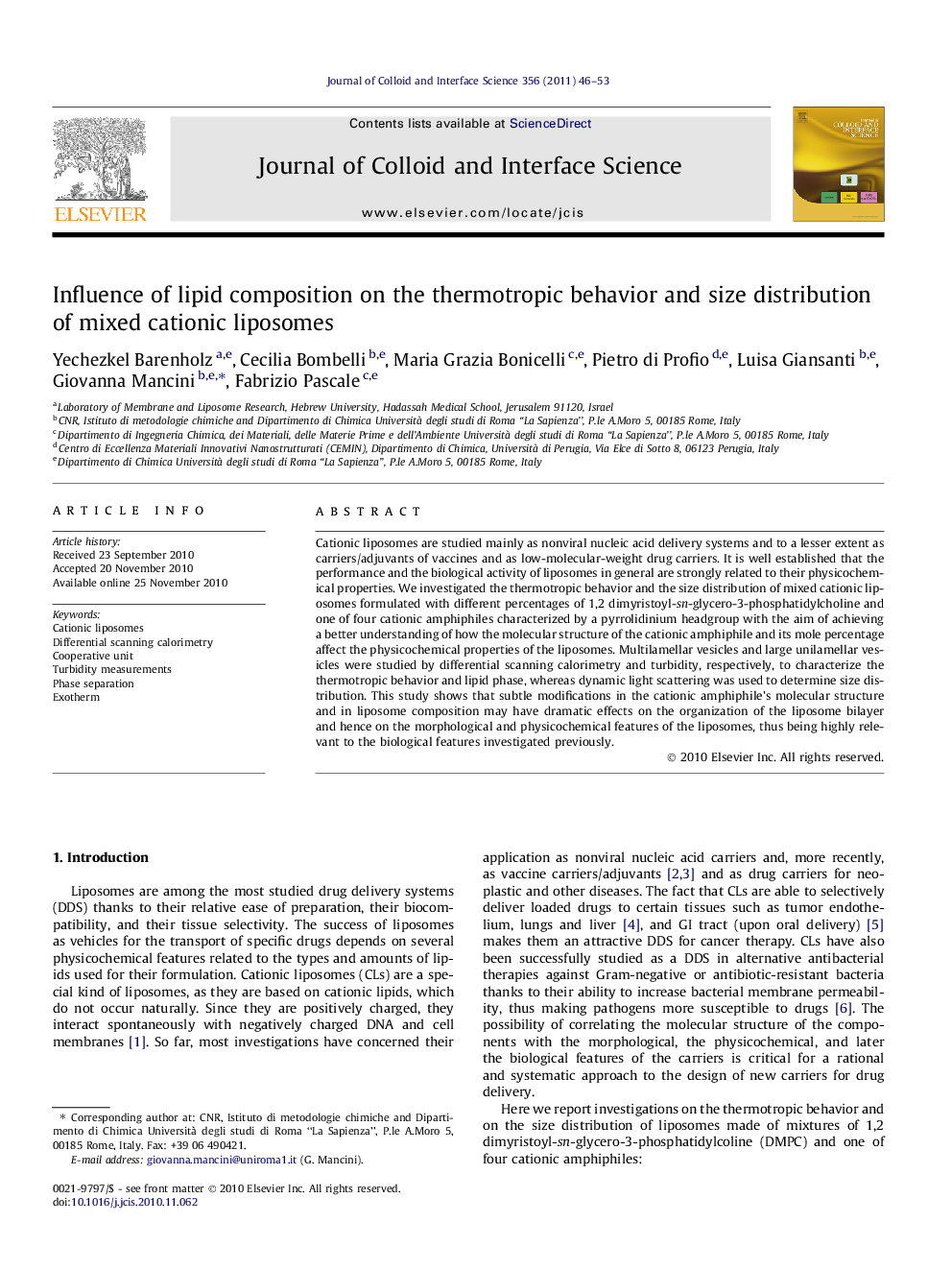| Article ID | Journal | Published Year | Pages | File Type |
|---|---|---|---|---|
| 608700 | Journal of Colloid and Interface Science | 2011 | 8 Pages |
Cationic liposomes are studied mainly as nonviral nucleic acid delivery systems and to a lesser extent as carriers/adjuvants of vaccines and as low-molecular-weight drug carriers. It is well established that the performance and the biological activity of liposomes in general are strongly related to their physicochemical properties. We investigated the thermotropic behavior and the size distribution of mixed cationic liposomes formulated with different percentages of 1,2 dimyristoyl-sn-glycero-3-phosphatidylcholine and one of four cationic amphiphiles characterized by a pyrrolidinium headgroup with the aim of achieving a better understanding of how the molecular structure of the cationic amphiphile and its mole percentage affect the physicochemical properties of the liposomes. Multilamellar vesicles and large unilamellar vesicles were studied by differential scanning calorimetry and turbidity, respectively, to characterize the thermotropic behavior and lipid phase, whereas dynamic light scattering was used to determine size distribution. This study shows that subtle modifications in the cationic amphiphile’s molecular structure and in liposome composition may have dramatic effects on the organization of the liposome bilayer and hence on the morphological and physicochemical features of the liposomes, thus being highly relevant to the biological features investigated previously.
Graphical abstractPhase behavior and size distribution of mixed cationic liposomes formulated with one of four different cationic amphiphiles featuring a pyrrolidinium headgroup were investigated by turbidity, DSC and DLS measurementsFigure optionsDownload full-size imageDownload high-quality image (64 K)Download as PowerPoint slideResearch highlights► Liposomes were formulated at different DMPC/cationic amphiphile mole ratios. ► The size distribution of LUV was evaluated by DLS measurements. ► The thermotropic behavior of LUV was evaluated by turbidity measurements. ► The thermotropic behavior of MLV was evaluated by DSC measurements. ► Subtle changes in vesicle composition strongly influence lipid organization.
